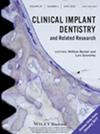Moldable and Particulate Bone Material in Alveolar Ridge Preservation: A Multicenter Randomized Controlled Trial
Abstract
Introduction
This study aimed to determine possible histological and radiological differences in alveolar ridge preservation (ARP), using moldable bone versus particulate bone.
Methods
After tooth extraction, 39 patients (40 teeth) were randomized (1:1) to receive ARP using moldable bone materials (SBX group) or particulate bone materials (PBX group). An absorbable collagen membrane was placed over the graft material and the surgical site was sutured. Cone-beam computed tomography was taken immediately and 5 months after ARP. Bone core samples from the implantation site were obtained for histomorphometric analysis 5 months after ARP.
Results
Forty-six patients were screened and 39 of them completed the study. However, one patient who received split-mouth treatment was excluded, resulting in data from 38 patients being analyzed. In radiological evaluation, the changes in midbuccal alveolar bone height at 5 months were −0.753 ± 0.112 and −1.018 ± 0.111 mm in the SBX group and PBX groups, respectively (F = 2.895; p = 0.098; mean difference [MD] 0.265; 95% confidence interval [CI] = −0.051 to 0.582). Changes in the horizontal ridge width were measured at three levels (−1, −3, and −5 mm) below the most coronal aspect of the crest and showed a decrease in both groups, with no significant differences between the groups. The percent new bone area of the SBX group (39.156 ± 2.505) was significantly different from that of the PBX group (22.749 ± 2.476) (F = 22.171; p < 0.001; 95% MD 16.407; CI = 9.333 to 23.481). The percent residual material area was significantly lower in the SBX group (8.973 ± 2.211) compared to the PBX group (15.633 ± 2.186), with an F-statistic of 4.687 and p-value = 0.037 (MD –6.660; 95% CI = −12.904 to −0.415). The percent connective tissue area was 49.743 ± 4.199 and 56.657 ± 4.151 for the groups (F = 1.401; p = 0.245; MD –6.914; 95% CI = −18.773 to 4.944), respectively.
Conclusion
Radiological and histological results showed that use of moldable bone can achieve similar ARP parameters as those achieved by particulate bone.
Trial Registration: Clinical Research Information Service No. KCT0009560. This randomized clinical trial was not registered before participant recruitment and randomization. (Date of registration: 21/06/2024. https://cris.nih.go.kr/cris/search/detailSearch.do?seq=27272&searchpage=L)

 求助内容:
求助内容: 应助结果提醒方式:
应助结果提醒方式:


